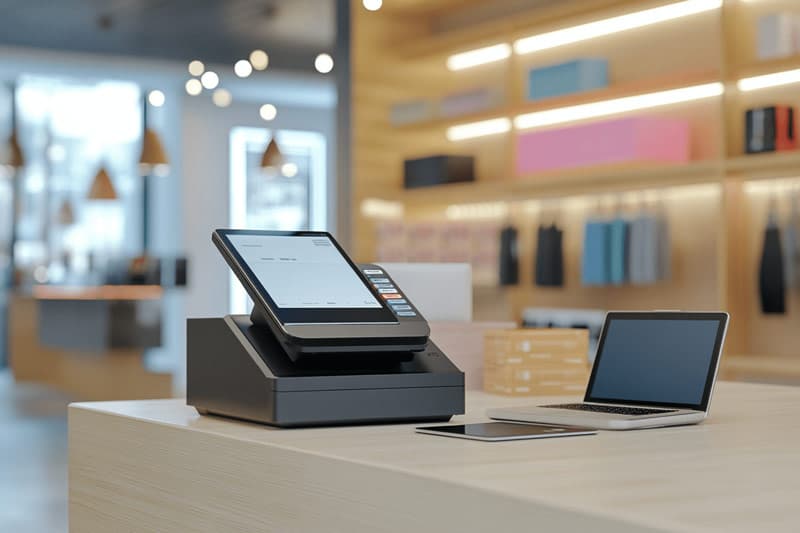The landscape for high-risk merchants continues to evolve, with regulatory scrutiny and fraud threats becoming more complex each year. Businesses operating in industries such as CBD, adult entertainment, gambling, and high-risk e-commerce must navigate strict compliance requirements while mitigating fraud risks. Failure to comply with industry regulations can result in hefty fines, account terminations, and even legal consequences, making regulatory adherence a priority.
As 2025 approaches, compliance strategies must go beyond simply following payment processor guidelines. High-risk merchants must implement proactive fraud prevention tools, maintain PCI compliance, and stay updated on evolving regulatory frameworks. With stricter enforcement of financial laws and more sophisticated fraud tactics, businesses must take a strategic approach to compliance that protects their revenue while ensuring long-term operational stability.
The Growing Compliance Challenges for High-Risk Merchants
High-risk businesses face a unique set of compliance challenges that standard merchants do not encounter. These challenges stem from increased fraud risks, regulatory oversight, and the cautious approach that financial institutions take when working with high-risk industries[1].
Evolving Regulatory Standards
Regulatory bodies such as the Payment Card Industry Data Security Standard (PCI DSS), the Financial Crimes Enforcement Network (FinCEN), and the Federal Trade Commission (FTC) are tightening compliance measures for high-risk merchants[2]. These changes require businesses to maintain higher security standards, stricter identity verification processes, and more comprehensive fraud prevention protocols to reduce financial risks and safeguard customer data.
Higher Chargeback Rates
Industries classified as high-risk often experience higher-than-average chargeback rates, which can lead to costly penalties and even account closures[3]. Many payment processors enforce chargeback thresholds, and exceeding these limits can result in merchants being placed on the MATCH list (Merchant Alert to Control High-Risk). This designation makes it significantly harder to obtain new merchant accounts, further complicating financial operations.
Increased Fraud Threats
Fraudulent transactions remain a top concern for high-risk merchants, as these businesses are frequent targets for stolen credit card fraud, chargeback abuse, and identity theft[4]. The lack of consistent security standards across global markets makes it even more difficult to prevent fraud, leaving businesses vulnerable to financial losses and compliance violations.
PCI Compliance: The Cornerstone of Secure Transactions
PCI compliance is a critical requirement for any business handling credit card payments, but it is particularly important for high-risk merchants. These businesses process large transaction volumes and store sensitive customer data, making them prime targets for cyberattacks. Non-compliance can lead to fines ranging from $5,000 to $100,000 per month and the potential loss of merchant processing privileges.

Key PCI DSS Requirements for 2025
High-risk merchants must adhere to the latest PCI DSS 4.0 standards, which introduce enhanced encryption, multi-factor authentication (MFA), and real-time monitoring tools. These updates are designed to combat the growing threat of payment fraud and cybercrime while ensuring that businesses maintain the highest levels of data security.
Steps to Maintain PCI Compliance
To maintain PCI compliance and protect sensitive payment data, high-risk merchants must implement a multi-layered security strategy. Encrypting all cardholder data through tokenization and end-to-end encryption prevents unauthorized access, ensuring that payment information remains secure. Strong access controls should be enforced to restrict system access to authorized personnel only, reducing the risk of internal breaches. Regularly updating security protocols, such as performing vulnerability scans and applying software updates, helps mitigate evolving threats.
AI-Powered Fraud Detection
Artificial intelligence is revolutionizing fraud prevention by enabling real-time monitoring and predictive analytics. These systems analyze transaction behaviors, flagging suspicious activity based on past fraud patterns and emerging threats. Many high-risk merchants are integrating machine learning-based fraud detection to automatically block risky transactions before they are processed.
Identity Verification and Multi-Factor Authentication
High-risk merchants can reduce fraud by implementing robust identity verification measures, such as multi-factor authentication (MFA), biometric verification, and Know Your Customer (KYC) protocols. These security measures help confirm a customer’s identity before approving transactions, significantly reducing the risk of chargebacks and fraudulent purchases.
Chargeback Management and Dispute Resolution
With chargeback rates being a persistent challenge, high-risk businesses must deploy chargeback prevention tools that provide pre-transaction risk analysis and automated dispute resolution. Some merchants use 3D Secure 2.0 (3DS2) authentication to shift liability back to issuing banks, protecting themselves from fraudulent chargebacks.
Real-Time Payment Monitoring
Businesses can reduce fraudulent activity by monitoring transactions in real time and setting custom fraud filters based on transaction velocity, geographic location, and IP reputation. Payment gateways with AI-driven fraud scoring can identify high-risk transactions before they occur, ensuring secure payment processing.
High-Risk Merchant Solutions for Secure Payment Processing
Choosing the Right High-Risk Payment Processor
Not all payment processors accept high-risk businesses, making it crucial to choose a provider that offers specialized merchant accounts for high-risk industries. These processors provide custom fraud prevention tools, chargeback management solutions, and higher approval rates for businesses operating in regulated markets.
The Role of Tokenization in Secure Transactions
Tokenization replaces sensitive cardholder data with unique tokens, ensuring that customer payment information is never directly stored in business databases. This security measure reduces the risk of data breaches and helps merchants maintain PCI compliance while providing a seamless checkout experience.
Subscription Billing and Recurring Payment Protection
High-risk merchants offering subscription services must ensure clear billing policies, transparent refund processes, and automated renewal notifications. Subscription-based fraud and chargebacks often occur due to unclear billing terms, leading to increased dispute rates. Proactive customer communication and chargeback mitigation services can help businesses maintain stable revenue streams.
Adapting to Emerging Fraud Tactics
As fraudsters develop more sophisticated methods, high-risk merchants must stay ahead by continuously refining their security strategies. AI-driven fraud detection tools can analyze transaction patterns in real-time, identifying anomalies that may indicate fraudulent behavior before a chargeback occurs. Multi-factor authentication (MFA) and biometric verification further strengthen account security, making it harder for bad actors to exploit payment systems. By proactively adapting to emerging threats and leveraging advanced fraud prevention technologies, merchants can minimize financial losses while maintaining trust with their customers.

Governments worldwide are tightening regulations on high-risk industries, including stricter Know Your Customer (KYC) requirements and increased anti-money laundering (AML) enforcement. Businesses must stay informed about compliance updates in key markets, ensuring that they meet legal and financial obligations.
For businesses processing international transactions, cross-border compliance presents additional challenges. High-risk merchants must work with global payment providers that support multiple currencies, region-specific fraud prevention tools, and localized regulatory compliance to ensure seamless transactions.
As fraud tactics evolve, compliance strategies must be continuously updated. High-risk merchants should invest in AI-driven security solutions, adaptive risk scoring, and automated compliance reporting to stay ahead of emerging threats and regulatory changes.
Conclusion
Compliance and fraud prevention remain top priorities for high-risk merchants in 2025, as regulatory bodies enforce stricter payment security measures. Businesses must adopt PCI-compliant security protocols, AI-driven fraud detection, and robust chargeback management tools to mitigate risks and protect their financial operations[5].
By working with specialized high-risk payment processors, merchants can ensure secure, efficient, and legally compliant payment processing while reducing financial vulnerabilities. The future of high-risk payment solutions lies in proactive compliance, advanced security tools, and continuous regulatory adaptation.
For businesses seeking tailored high-risk merchant solutions, Payment Nerds provides comprehensive payment security and fraud prevention strategies designed for high-risk industries.
Sources
- McKinsey & Company. “The Future of Fraud Prevention in High-Risk Payment Processing.” Accessed February 12, 2025.
- PCI Security Standards Council. “PCI DSS 4.0: Key Changes for High-Risk Merchants.” Accessed February 12, 2025.
- Federal Trade Commission. “Compliance Guidelines for High-Risk E-Commerce Businesses.” Accessed February 12, 2025.
- Finextra. “How AI is Revolutionizing Fraud Detection for High-Risk Merchants.” Accessed February 12, 2025.
- Visa. “Chargeback Management and Fraud Prevention Strategies for 2025.” Accessed February 12, 2025.











